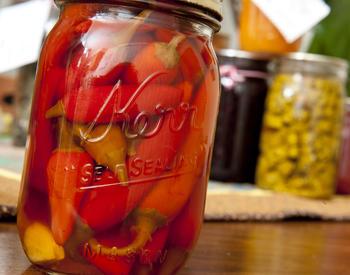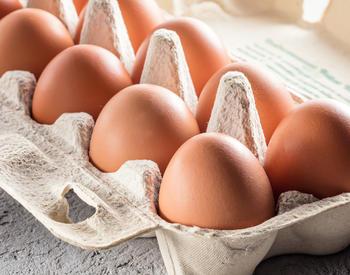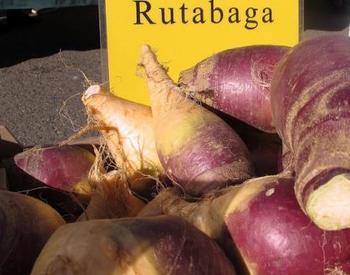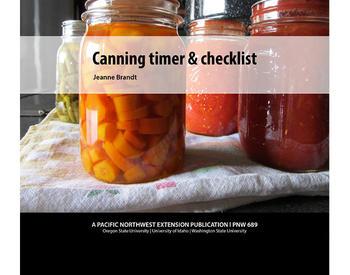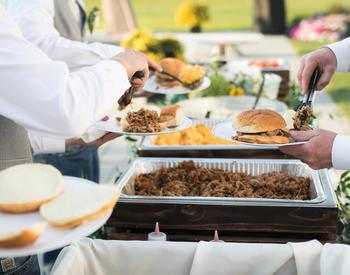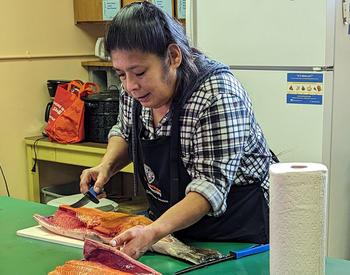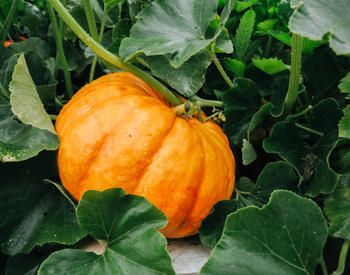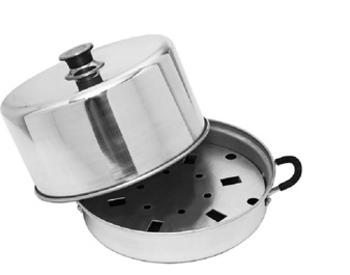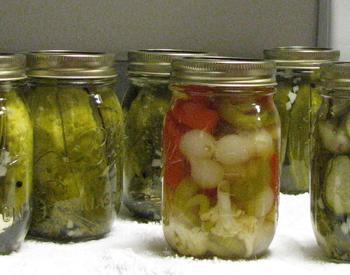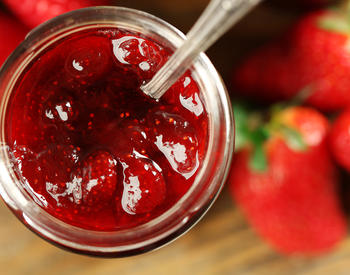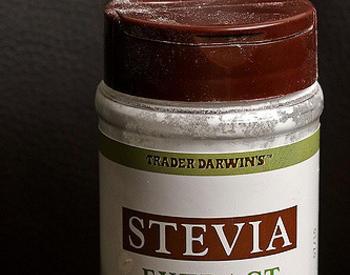Download this publication as a PDF
Garlic grows well throughout the Northwest. There are two types commonly grown: Allium sativum, the more commonly cultivated type; and Allium ampeloprasum, more commonly called elephant garlic. The elephant garlic is the mildest in flavor and also the most perishable.
Harvesting
After all the tops have fallen over and become fairly dry, the bulbs are ready to harvest. This occurs in late August or early September. After the tops have fallen, lift the bulbs carefully with a trowel or spade and place the entire plant in the shade to dry for a week or more. The garlic is dry when the skin becomes papery. After drying, clip off the tops and roots (1 inch from the bulb), or leave the plants intact and braid the stems together. Handle garlic very gently. Garlic deteriorates very rapidly if bruised.
Storage
Garlic may be stored in mesh bags or slatted crates or hung in braided ropes or bunches from the rafters. Any cool, well-ventilated place will do for storage through the winter months. In very cold areas the bulbs should be protected from freezing. The ideal storage temperature is 32°–38°F at less than 70% humidity. Garlic will sprout fastest between 40°–60°F.
Freezing
Garlic can be frozen in three ways:
- Grind or chop the garlic, wrap it tightly and freeze. To use, just grate or break off the amount you need.
- Freeze the garlic unpeeled and just remove cloves as you need them.
- Peel the cloves and puree them with oil in a blender or food processor, using two parts oil to one part garlic. The puree will stay soft enough in the freezer to scrape out parts to use in sautéing.
Note: All garlic placed in the freezer should be tightly wrapped or the strong garlic flavor will penetrate other foods in the freezer.
Garlic stored in wine
Peeled garlic cloves may be submerged in wine and then stored in the refrigerator. The garlic can be used as long as there is no sign of mold growth or yeast on the surface of the wine. Both the garlic-flavored wine and the garlic may be used. Do not store the garlic wine mixture at room temperature because it will rapidly develop mold growth.
Garlic stored in oil
Raw garlic in oil must be stored in the refrigerator and used within 4 days or frozen for long-term storage. Refer to Herbs and Vegetables in Oil (SP 50-701) for information on preparation and storage, or follow directions in PNW 664 (Making Garlic and Herb-Infused Oils at Home).
Drying garlic
Garlic can be dried and made into garlic powder and garlic salt. For drying, select only fresh, firm garlic cloves with no bruises. Separate and peel the cloves. Small cloves can be sliced in half and large cloves should be sliced in ¼-inch slices. Place garlic on drying trays and dry at 140°F for 2–3 hours or until the garlic is crisp. To make garlic powder, place the dried garlic into a blender and blend until fine. To make garlic salt, add 4 parts of salt to 1 part garlic powder and blend only a second or two. If you blend longer, the salt will be too fine and will cake. Store the powder and salt in a closed container in a dark, dry place.
Pickled Garlic (Yield: 3 half pints)
- 3 cups peeled garlic cloves
- 1½ cups white distilled vinegar (5%) acidity
- ½ cup sugar
- ½ teaspoon non-iodized salt
- 1 teaspoon pickling spices (optional)
- Red chili flakes (Optional for hot garlic)
Procedure:
- Heat vinegar, sugar, salt and spices to boiling.
- Boil garlic cloves for 1 minute in a pan of boiling water.
- Drain and pack hot cloves into hot ½ pint or pint jars leaving ½ inch headspace.
- Pour boiling brine over garlic, leaving ½ inch headspace. Remove bubbles.
- Wipe top of jar, adjust lids, process in a boiling water canner for 10 minutes.
- After processing, take canner off heat. Remove lid and wait 5 minutes before removing jars.
Source: OSU Master Food Preserver Program
